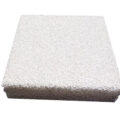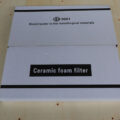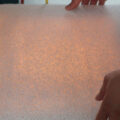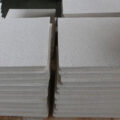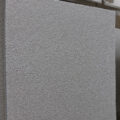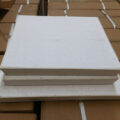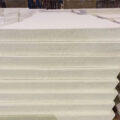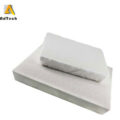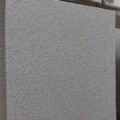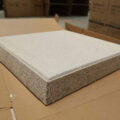Ceramic foam filters for metal foundry are designed for mold-casting metal. Thanks to the mechanism of creation of the “filter cake” on the inlet filter side and thanks to depth filtration inside the ceramic matrix, these ceramic foam filters are an effective instrument to reach the metallurgical purity of molten metal during the process of casting. The filters also calm mold filling, thus preventing the creation of undesirable defects in the casting.
Ceramic foam filters for metal foundry features are conditioned by the open 3D structure of the ceramic matrix created by the system of mutually interconnected cells. They are characterized by very good thermal conductivity, stability, and resistance to sudden temperature changes.

Ceramic foam filter for foundry is mainly used in the production of the aluminum and aluminum alloy purification process. With more and higher quality aluminum product requirements, the application of alumina ceramic foam filters will be more extensive.
Filtration with ceramic foam filters can improve the quality of premium aluminum castings.
The presence of nonmetallic inclusions is detrimental to the production of premium quality castings. High attainable mechanical properties are a key aspect that is readily lost in the presence of inclusions and oxide skins. The mechanical properties of high-strength aluminum alloys are very sensitive to notches or imperfections in the casting. Filtration effectively reduces inclusion levels and subsequent notch effects caused by inclusions. Conventional techniques for attempting to remove inclusions are ineffective, and the use of metal or fiber screens isn’t sufficient to keep the metal truly free of harmful non metallics.
Premium quality castings generally restrict the acceptability of surface defects that are revealed by dye penetrant inspection. Research has shown the level of such defects is reduced when ceramic foam filtration is involved.
Another benefit that is gained from the use of ceramic foam filters is the reduction in the x-ray evidence of non metallics. The presence of x-ray defects under these circumstances is often the basis for the rejection of expensive castings. The most significant benefit is the reduction of defects visible in those areas that are designated as “structurally critical.”

